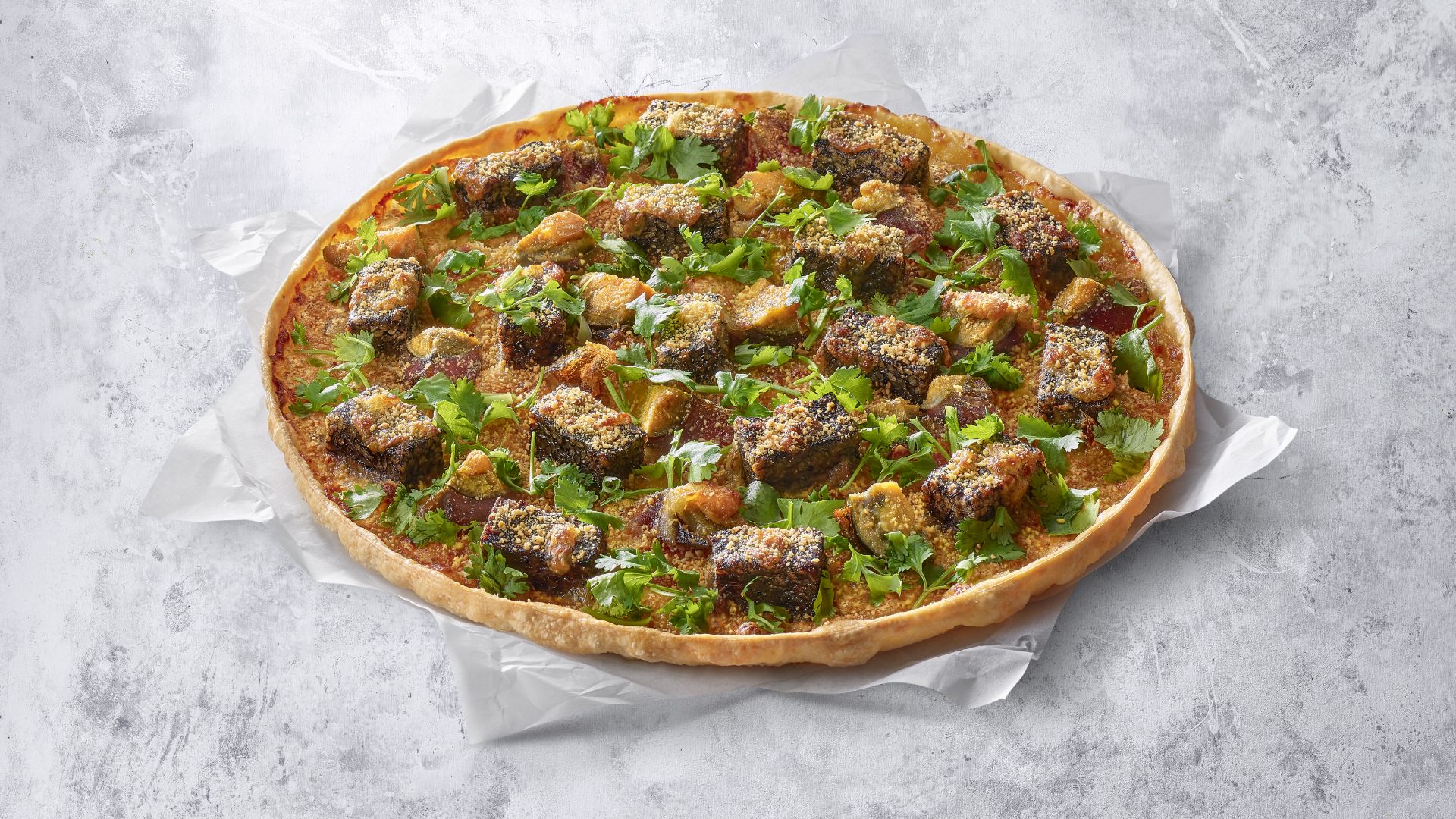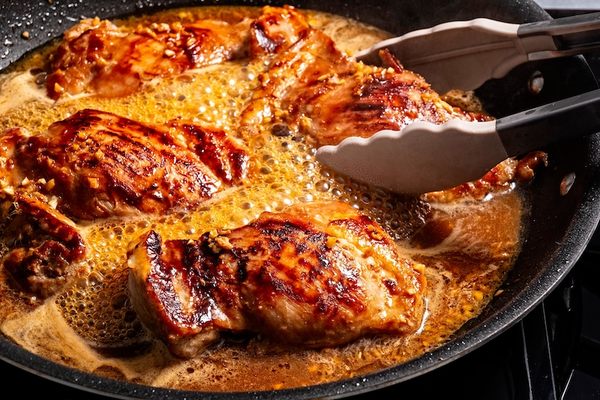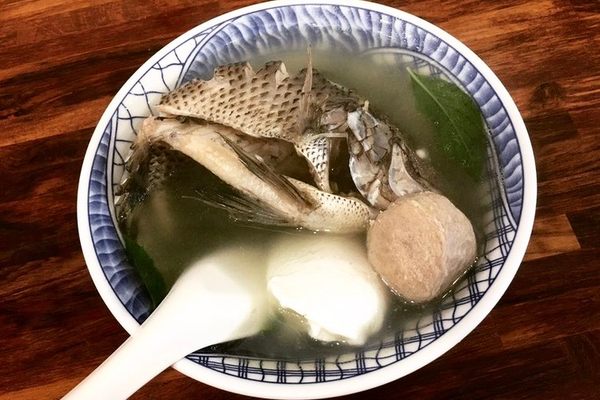Pizza Hut Taiwan Knows It’s Making Italians Angry
From stinky tofu to Oreo-calamari, there’s a method to their specialty-pie madness.
Whenever Pizza Hut Taiwan releases a new flavor, the internet braces itself. In my decade covering the island’s food scene, I’ve noticed few dishes spark as much excitement—and outrage—as their pies. One commenter on Reddit called their 2022 scalloped pizza with Oreos around the edge, and deep-fried chicken and calamari studded throughout the middle, “a crime against humanity.” Another called the 2023 April Fools’ special, a ring made out of dough with nothing in the middle, “dumb.”
The Oreo-crusted pie sold out in three days. The giant ring was the best-selling specialty pizza in Taiwanese Pizza Hut history. Contrary to popular disbelief, they seem to know what they’re doing.
Since 2019, the Taiwanese outpost of Pizza Hut has been a bastion of weirdness. They’re the progenitor of a series of eyebrow-raising combinations, from pig’s blood and intestine toppings to boba pizza with milk-tea sauce drizzled on top to spicy hot pot pies. Sometimes, the pizza is even contorted into shapes representing Olympic rings or a cartoon star.
In spring 2024, their latest creation—a turtle-shaped sticky rice pizza with mugwort and red bean—set my social media feeds ablaze. In a seemingly irrelevant twist, the turtle looked as though it had been flattened by a truck and tossed into radioactive sewage. International commenters were bewildered. But Taiwanese netizens immediately recognized it as a riff of a traditional Taiwanese rice pastry tied to the Tomb Sweeping Festival. As for its unconventional appearance, “making a perfect turtle is difficult,” admits Anthony Leung, general manager of Pizza Hut Taiwan.

Offending people, as it turns out, is part of Pizza Hut Taiwan’s marketing playbook. “The whole objective is to get people to talk about Pizza Hut,” Leung tells me.
I meet Leung at the Taipei office of Jardine Restaurant Group, the company that operates the Pizza Hut and KFC franchises in Taiwan, Hong Kong, Macau, and Vietnam. Dressed sharply in a slim gray blazer, Leung speaks fluent English with a distinct Hong Kong twang. He came to Pizza Hut Taiwan in 2019, and had cut his teeth at multinational consumer goods companies like Procter & Gamble and Johnson & Johnson.
When Leung first arrived in Taiwan, sales at the local Pizza Huts were stagnant. Although the chain had been in Taiwan since 1986, it struggled to capture the everyday consumer because Taiwanese people typically ate pizza only for the holidays, like Lunar New Year, Christmas, and Mother’s Day. It wasn’t an integral part of the Taiwanese diet.
Leung was brought on to ignite the Taiwanese appetite for pizza, and hold their attention. “How do we get people to think and talk about Pizza Hut during the non-holiday season?” he says.
He parsed through the data and noticed that 80 percent of Pizza Hut Taiwan’s sales came from online channels like apps and Pizza Hut’s website. “We are quite a digital company here,” Leung adds.
Inspired by McDonald’s viral black-and-white burgers, which had sparked a surge in online searches for the burger brand, he proposed a progression of shocking toppings that could generate buzz, but were still familiar to the Taiwanese market. His idea was three different pizzas topped with durian, stinky tofu, and boba, respectively.
When he presented his ideas to Pizza Hut’s international team for approval, he was met with skepticism. “The boss looked at me and said, ‘I honestly don’t know whether or not this will work, but we trust our franchisee. You know the customer better.’”
Leung was given the green light for a limited-edition trial run, and in August, October, and November 2019, the flagship pizzas were rolled out.
The strategy proved successful: The pizzas sold out. Though the quirky creations contributed less than 5 percent of total sales, they sparked conversations that ultimately drove more business. “It created double-digit growth in both traffic and revenue for the brand,” says Leung. Suddenly, Pizza Hut became part of everyday talk in Taiwan, well beyond the holiday celebrations, and Leung’s unconventional pizza strategy became a core tenet of the brand’s marketing strategy. “We are the fastest-growing pizza brand [in Taiwan] in the past five years,” he says.

To maintain momentum, Leung and his team roll out roughly six new flavors a year and have a product library stacked with unconventional flavors. He personally taste-tests each creation, a process that can stretch for weeks. Each pizza is evaluated internally for flavor and shock value before launch. They consider everything: type of cheese, crust, number of toppings, taste, and supply chain logistics. “The finances have to make sense,” he says.
On the other side, they’ve cultivated a loyal ecosystem of influencers and diehard fans who follow and taste every new pizza with bated breath.
“People who are excited to try these pizza flavors don’t genuinely think of them as culinary innovations that are meant to be delicious,” says Lev Nachman, a political scientist at National Taiwan University, who has been a fan and consumer of the chain’s ludicrous pizza flavors since 2019. “It’s totally ridiculous and bonkers, and it brings people a sense of excitement because pizza is supposed to be fun.” Nachman was drawn in by the boba pizza, but was especially impressed by the regional sticky rice dumpling pizza of 2021, which had sticky rice stuffed in the crust. “It brought me a lot of joy,” he notes.
Not everyone, however, has been super happy with the pies. “Grandma forgive them, they don’t know what they’re doing,” an Italian commenter wrote on a viral Facebook post touting Pizza Hut’s cilantro, century egg, and blood cake toppings.
But a reaction—whether positive or negative—is exactly what Pizza Hut Taiwan aims for. When it comes to developing new pizzas, their main criteria are clear: “How do we appeal to the Taiwanese tastes and how do we make Italians angry?” Leung says.
In fact, if an idea is not polarizing enough, it gets scrapped. Leung recounts how an idea for a pizza topped with popcorn chicken—bite-size fried chicken seasoned with five spice—was shelved because it was too tame. “It sounds tasty. Why would people talk about it?” he says. Eventually a coworker revived the idea by suggesting they pair the popcorn chicken with deep-fried Oreos and calamari—other popular night market staples. The trio of ingredients would be an homage to Taiwanese street food.

“People thought it was funny,” Leung notes. “It sold through the roof.”
Five years later, Leung acknowledges that the shock factor isn’t as effective as it once was. The appetite for bizarre pizza flavors has reached a point where even extreme ideas struggle to impress. “It’s not going to work forever. People have too high expectations,” he says.
To adapt, they’ve shifted focus to collaborations targeting Gen Z, like partnering with local celebrities to create viral content, and launching themed pizzas tied to popular video game characters or major sports leagues.
Their messaging at times has even veered a bit meta.
In 2020, Pizza Hut Taiwan released a tongue-in-cheek video directed at Italians, with Leung and his team at a press conference solemnly apologizing for their offensive pizza flavors.
“The whole video is that we apologize for all the harm we’ve done to Italians, and that we finally made something really Italian—pasta,” Leung says.
The video got over 200,000 views. After the campaign, Pizza Hut Taiwan’s pasta sales doubled.
Gastro Obscura covers the world’s most wondrous food and drink.
Sign up for our regular newsletter.


























Follow us on Twitter to get the latest on the world's hidden wonders.
Like us on Facebook to get the latest on the world's hidden wonders.
Follow us on Twitter Like us on Facebook